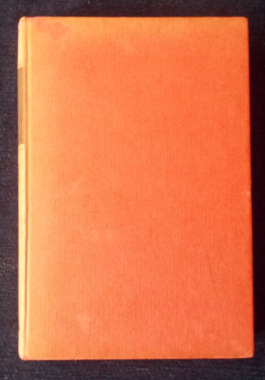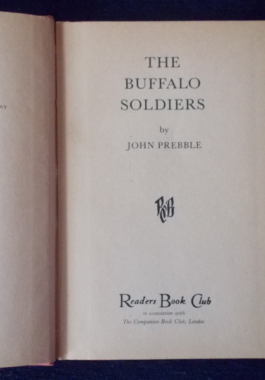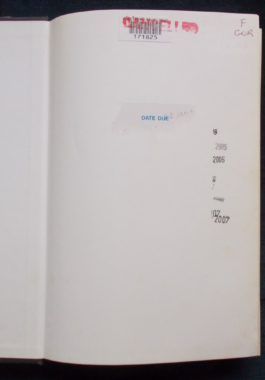-
 Our story open thus: In the first quarter of the thirteenth century, the evil doings of King John were yet fresh in the minds of men all over England, and the indirect consequences of his evil deeds were still acutely felt, and nowhere more than in Bedfordshire, where the scene of our story is laid. The county itself has much altered in appearance since that period. Great woods, intersected by broad, soft green lanes, overran its northern portion. Traces of these woods and roads still survive in Puddington Hayes and Wymington Hayes, and the great broad "forty-foot." South of this wild wooded upland, one natural feature of Bedfordshire remains unchanged. Then, as now, the Great Ouse took its winding, sluggish course from southwest to north-east across the county, twisting strangely, and in many places turning back upon itself as though loath to leave Bedfordshire. Some fifteen miles from point to point would have taken it straight through the heart of the little county, whereas its total course therein is more like fifty. One poetic fancy likens the wandering stream to a lover lingering with his mistress...
Our story open thus: In the first quarter of the thirteenth century, the evil doings of King John were yet fresh in the minds of men all over England, and the indirect consequences of his evil deeds were still acutely felt, and nowhere more than in Bedfordshire, where the scene of our story is laid. The county itself has much altered in appearance since that period. Great woods, intersected by broad, soft green lanes, overran its northern portion. Traces of these woods and roads still survive in Puddington Hayes and Wymington Hayes, and the great broad "forty-foot." South of this wild wooded upland, one natural feature of Bedfordshire remains unchanged. Then, as now, the Great Ouse took its winding, sluggish course from southwest to north-east across the county, twisting strangely, and in many places turning back upon itself as though loath to leave Bedfordshire. Some fifteen miles from point to point would have taken it straight through the heart of the little county, whereas its total course therein is more like fifty. One poetic fancy likens the wandering stream to a lover lingering with his mistress... -
 A charming collection of myths, legends and tales with giants, magic, saints, robust friars, Robin Hood and miracles.
A charming collection of myths, legends and tales with giants, magic, saints, robust friars, Robin Hood and miracles. -

 Frances is sent from her small Welsh village and warm, loving family to Maidenhurst School for Girls for education and a little smoothing out of her tomboy edges. There she makes friends, unwittingly makes enemies, has plenty of adventures, gets into trouble and develops 'crushes' on teachers and older girls in the school. She also teaches some of her school mates the meaning of 'honour' and courage. Written in 1925, the word 'love' as used by Frances and other characters when referring to teachers or older girls simply means a wish to emulate or intense admiration, being a common expression of the time.
Frances is sent from her small Welsh village and warm, loving family to Maidenhurst School for Girls for education and a little smoothing out of her tomboy edges. There she makes friends, unwittingly makes enemies, has plenty of adventures, gets into trouble and develops 'crushes' on teachers and older girls in the school. She also teaches some of her school mates the meaning of 'honour' and courage. Written in 1925, the word 'love' as used by Frances and other characters when referring to teachers or older girls simply means a wish to emulate or intense admiration, being a common expression of the time. -
 It's Operation Panic ! - and it's driving the whole camp crazy...but that's only the beginning of a series of madcap manoeuvres at Fourteenth Division headquarters.. On the Home Front the lurks and larks of these irrepresible Diggers keep them one step ahead of the provosts and when they're finally transferred to New Guinea, the enemy just don't stand a chance in this Battle of Wits. A riotous account of Aussie Army tactics.
It's Operation Panic ! - and it's driving the whole camp crazy...but that's only the beginning of a series of madcap manoeuvres at Fourteenth Division headquarters.. On the Home Front the lurks and larks of these irrepresible Diggers keep them one step ahead of the provosts and when they're finally transferred to New Guinea, the enemy just don't stand a chance in this Battle of Wits. A riotous account of Aussie Army tactics. -


Lietenant Garrett Byrne has just recently been promoted to take command of a squad of black soldiers. Irish-born and no-nonsense, he clashes frequently with his second-in-command, and struggles with his feelings over being placed in charge of such a squad. His troop is assigned the duty of guiding and protecting a band of reservation Comanches who want to hunt buffalo. Along the way, they encounter hide hunters, a white homestead family with a mother and two small children, and a band of Indian-hunting Texas Rangers. It's a volatile mix was the journey becomes a grim tale of chase and survival amid racial hatred and violence.
-
 Subtitled Being a Series of Bouquets Diffidently Distributed. Nichols interviews the luminaries of his day from the world of art, literature and music. Each chapter describes his interview or friendship and leaves an outline, an impression, of his subject: Noel Coward; Arthur Conan Doyle; George Gershwin; Eugene Goossens; W. Somerset Maugham; Dame Nellie Melba; Aldous Huxley; H.G. Wells - and more - and... were they the same when at home?
Subtitled Being a Series of Bouquets Diffidently Distributed. Nichols interviews the luminaries of his day from the world of art, literature and music. Each chapter describes his interview or friendship and leaves an outline, an impression, of his subject: Noel Coward; Arthur Conan Doyle; George Gershwin; Eugene Goossens; W. Somerset Maugham; Dame Nellie Melba; Aldous Huxley; H.G. Wells - and more - and... were they the same when at home? -

 Hudson explores the forces responsible for bringing about the Renaissance, which he describes as...the West's transition from the medieval to the modern world. Voyages of discovery, inventions, the revival of classical learning and the advent of science contribute to the intellectual upheavals of this creative period which are reflected in its literature and art. Hudson focuses on the one thread of continuity which he sees as both the seed and the fruit of this exciting era: the awakening of secular humanism and the emergence of the individual. Chapters: The Renaissance In General; The Age Of Invention And Discovery; The Revival Of Learning; The Renaissance In Religion: The Reformation; Science And Philosophy; Art, Literature And Education. Illustrated.
Hudson explores the forces responsible for bringing about the Renaissance, which he describes as...the West's transition from the medieval to the modern world. Voyages of discovery, inventions, the revival of classical learning and the advent of science contribute to the intellectual upheavals of this creative period which are reflected in its literature and art. Hudson focuses on the one thread of continuity which he sees as both the seed and the fruit of this exciting era: the awakening of secular humanism and the emergence of the individual. Chapters: The Renaissance In General; The Age Of Invention And Discovery; The Revival Of Learning; The Renaissance In Religion: The Reformation; Science And Philosophy; Art, Literature And Education. Illustrated. -


Rodney Stone: A. Conan Doyle
$150.00A Gothic coming-of-age story that takes place in Sussex County and follows a young boy with an interest in mischief, exploration, and boxing. Rodney Stone and his best friend, Jim Harrison have always been drawn to dark and dangerous places. When they wander into Cliffe Royale, an old, deserted mansion that was the scene of a gruesome murder fifteen years earlier, they’re both frightened and strangely excited to cross paths with a ghostly figure. Before they can identify who the ghost is and what it wants, Rodney’s wealthy uncle, Sir Charles Tregellis, arrives in Brighton and takes Rodney away. Rodney soon learns that Tregellis, a typical dandy, is connected to just about everyone in London and has focused his attention on an upcoming boxing match to be witnessed by thirty thousand spectators. If Tregellis’s unnamed challenger wins the fight, it could mean grave trouble for Tregellis and everyone he’s associated with - including Rodney. Distracted by the upcoming fight, Rodney almost forgets about the chilling discovery he made at Cliffe Royale with Jim - until the past comes back to haunt them all. A story with twists, turns and the famous and infamous from history - an unforgettable portrait of what life was like for both the common man and the social elite in the early 19th Century.




